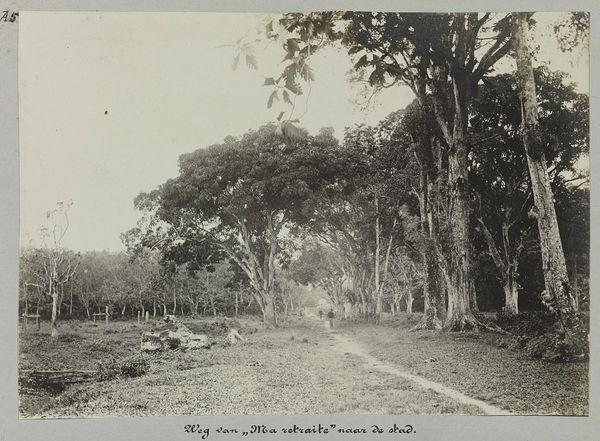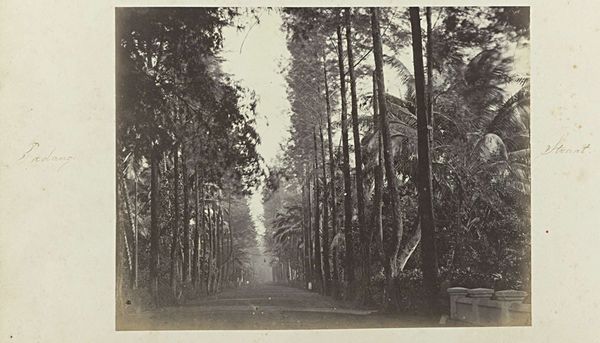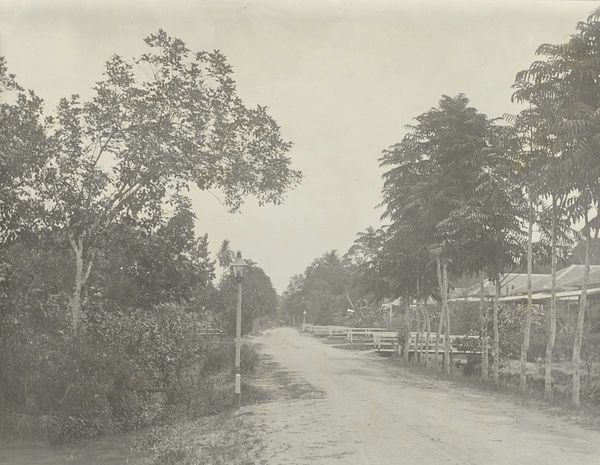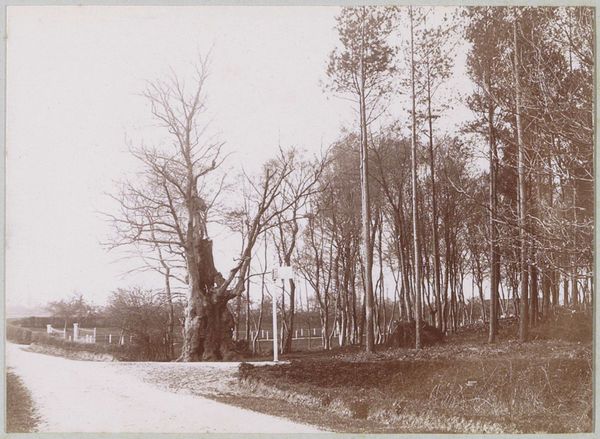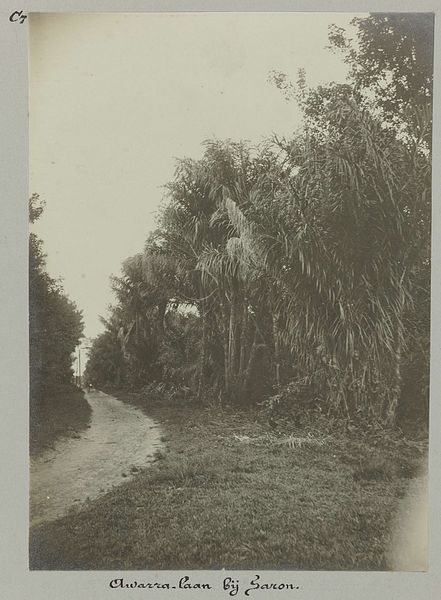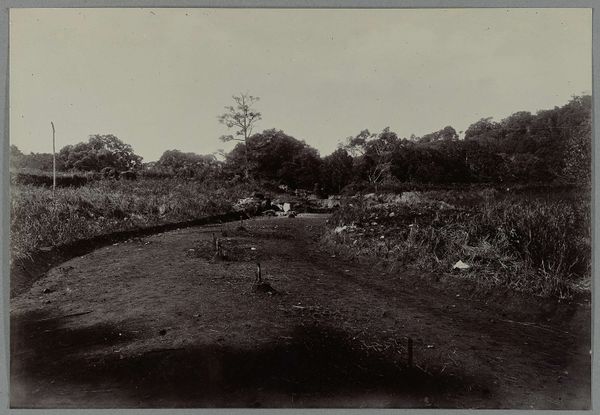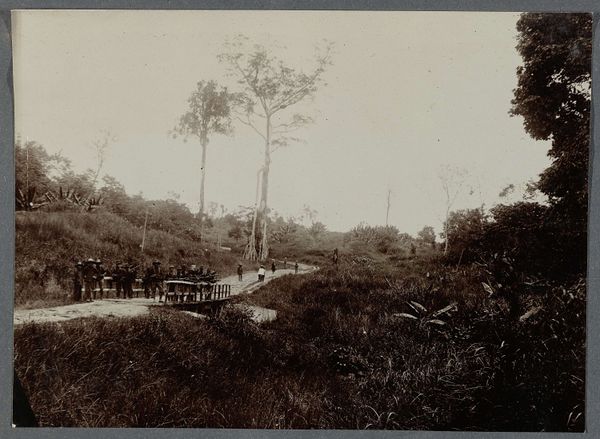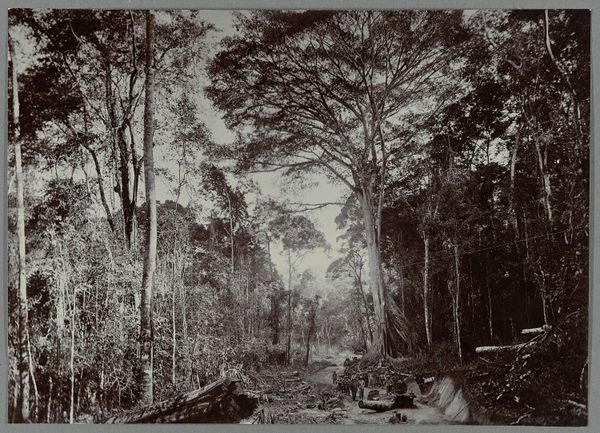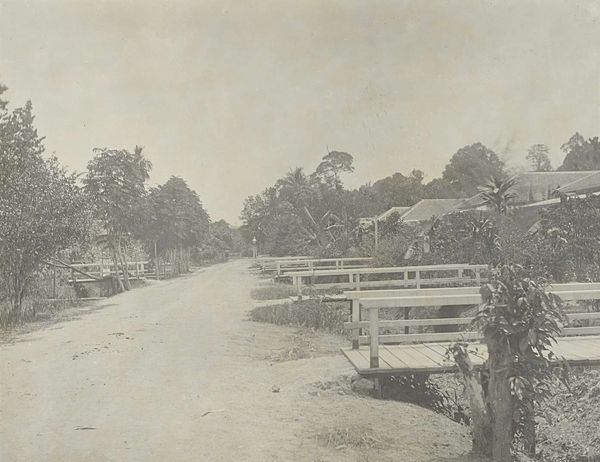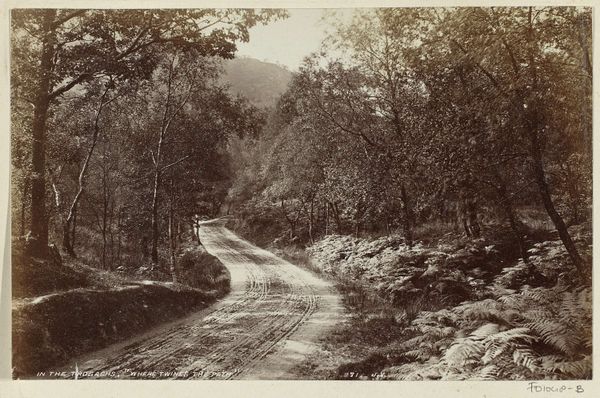
photography, gelatin-silver-print
#
landscape
#
nature
#
photography
#
gelatin-silver-print
#
monochrome photography
#
realism
Dimensions: height 11.5 cm, width 16 cm
Copyright: Rijks Museum: Open Domain
Curator: Here we have an anonymous gelatin-silver print titled "Spooraanleg te Suriname," dating from somewhere between 1916 and 1930. Editor: It has a stark, almost haunting quality, doesn't it? The road seems to cut directly into the wilderness, a gray gash through a sea of trees. Curator: Yes, and the monochrome really enhances that sense of drama and contrast. It captures the period's focus on realism—what can you tell us about this landscape’s history? Editor: Well, “Spooraanleg te Suriname” translates to ‘Railroad Construction in Suriname’ which offers some vital context. Look closely at the vegetation and note that there are felled trees lining either side of this rudimentary pathway. It is clearly a site of colonial resource extraction. The image's symbolism underscores a larger narrative of exploiting the land and labor of Suriname. Curator: Precisely, and perhaps also the photographer is representing an advance into unexplored spaces. Roads are ancient symbols—pathways, movement, transitions… They appear throughout diverse cultural traditions. Editor: But for whom is this path being cleared? Railroads serve specific economic and political agendas, generally prioritizing colonizers' interests. This photograph may well have been taken for documentation and to also convey a false sense of order over a landscape which was very much altered by violent extraction. Curator: That’s a fair point. Although it may look innocuous at first glance, the cultural associations quickly become sinister. The artist has successfully frozen this scene to force us to think about more complex histories. It reminds me of something... Editor: So, in considering it from our contemporary position, what responsibilities do viewers have in the presence of such historical artefacts? Curator: It's a poignant reminder of how even seemingly objective documentary images can conceal layered meanings and hidden perspectives. Thanks for unraveling that complexity. Editor: Always a pleasure. It's in those unravellings we locate both justice and perhaps healing, in a small way.
Comments
No comments
Be the first to comment and join the conversation on the ultimate creative platform.
